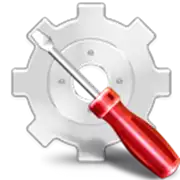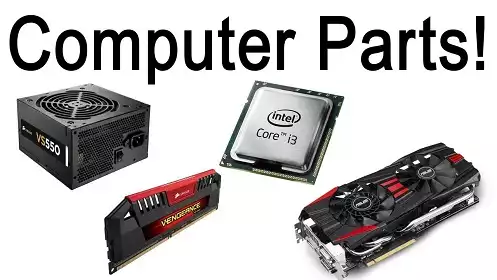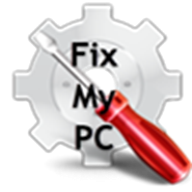In today’s digital age, mastering computer basics is essential for navigating both personal and professional landscapes effectively.
Whether you are a complete novice or seeking to refresh your knowledge, this step-by-step guide is designed to empower you with the foundational skills necessary for success.
You will discover how to efficiently operate your computer, utilize software applications, and understand the internet’s vast resources.
With technology continuously evolving, having a solid grasp of fundamental concepts will not only boost your confidence but also enhance your productivity.
Each section of this guide will break down complex topics into manageable steps, ensuring that you can follow along at your own pace.
From understanding hardware components to navigating software interfaces, you will gain practical insights that can be immediately applied.
By the end of this journey, you will be equipped with the tools needed to tackle everyday tasks with ease and proficiency.
Embrace the opportunity to enhance your digital literacy and open doors to new possibilities in both your personal and professional life.
Let’s embark on this journey together, as you take the first steps toward mastering the computer basics that will serve you for years to come.
Table of Contents Mastering Computer Basics Step-by-Step Guide
Familiarize yourself with essential computer parts
Understanding the essential components of a computer is crucial for effective use and maintenance.
At the core of your system is the CPU, or central processing unit, which functions as the brain of the computer, executing instructions and processing data.
Accompanying the CPU is the memory, typically referred to as RAM, which temporarily stores data that is actively being used by the processor, thereby facilitating quick access and efficient multitasking.
Another significant component is the GPU, or graphics processing unit, which is responsible for rendering images, videos, and animations.
This part is especially important for tasks that require high graphical performance, such as gaming or graphic design.
By familiarizing yourself with these key parts, you will enhance your ability to troubleshoot issues, upgrade components, and make informed decisions regarding your computer’s performance and capabilities.
Understand the role of the CPU
The CPU plays a pivotal role in your computer’s overall performance, acting as the primary unit that performs calculations and executes instructions from software applications.
It operates at high speeds, processing millions of instructions per second, which underlines its importance in determining how quickly your system runs tasks, from simple calculations to complex simulations.
It interacts closely with memory, retrieving and storing data as needed, ensuring that operations proceed smoothly without bottlenecks.
Understanding how the CPU communicates with both memory and other components, such as the GPU, is essential for optimizing performance and achieving a seamless computing experience.
In practical terms, recognizing the CPU’s capabilities and limitations allows you to make informed decisions about your system’s configuration.
Upgrading to a more powerful processor can significantly enhance your computer’s ability to handle demanding applications, while ensuring that your memory and GPU are also compatible supports overall system harmony.
By grasping the intricate relationship between the CPU and the other vital computer parts, you place yourself in a better position to maximize your machine’s potential and tailor it to your specific needs.
Learn how memory affects performance
Memory is a crucial component that directly influences the performance of your computer.
It serves as a temporary storage area where data is held for quick access by the CPU, enabling faster processing of tasks.
The amount and speed of memory can directly impact your system’s ability to multitask and run memory-intensive applications smoothly.
When there is insufficient memory available, your computer may resort to using slower storage solutions, leading to performance drops and increased latency.
Understanding how to optimize memory usage is key to ensuring that your CPU operates at its full potential, allowing you to efficiently run applications, games, and other resource-heavy processes.
Additionally, the interaction between memory and the GPU is vital, particularly in graphics-intensive tasks such as gaming or video editing.
A high-performance GPU relies on sufficient and fast memory to quickly render images and graphics.
If the memory cannot keep up with the processing demands of the GPU, it can lead to frames being dropped or stuttering during gameplay, thus impacting overall visual performance.
By grasping the dynamics of how memory, CPU, and GPU work together, you can make strategic upgrades and configurations that will enhance your computing experience and ensure optimal performance across various applications.
Explore the function of the GPU
The GPU, or Graphics Processing Unit, plays a fundamental role in rendering visuals and managing graphical tasks within your computer.
As a specialized piece of hardware, it is designed to handle complex calculations and data processing required for graphics rendering, allowing the CPU to focus on other system functions.
When working with applications that demand high graphical fidelity, such as video games or 3D modeling software, the efficiency of the GPU becomes paramount.
It processes vast amounts of pixel data and can execute many operations simultaneously, which is essential for delivering smooth frame rates and high-resolution displays.
Furthermore, the synergy between the GPU, CPU, and memory is crucial for optimal performance.
While the CPU handles general-purpose tasks, the GPU accelerates the rendering process by offloading specific graphical workloads, thus improving overall system efficiency.
The data flow between these components must be seamless; sufficient memory bandwidth ensures that the GPU can access the information it needs without bottlenecks, which is particularly important in scenarios with high graphical complexity.
Understanding the function of the GPU in relation to these other computer parts will enhance your ability to optimize your system for various applications, ensuring a smoother and more responsive experience.
Identify different types of CPUs available
CPUs, or Central Processing Units, are the primary components responsible for executing instructions and processing data within your computer system.
There are several types of CPUs available, each designed to cater to specific needs and workloads.
For instance, consumer-grade CPUs, such as those from Intel’s Core series or AMD’s Ryzen lineup, are tailored for everyday tasks, gaming, and content creation, offering a balance of performance and energy efficiency.
On the other hand, high-performance CPUs, like Intel’s Xeon or AMD’s EPYC series, are engineered for servers and data centers, providing higher core counts and support for advanced memory configurations to handle intensive applications and large-scale data processing.
Additionally, you may also encounter specialized CPUs, such as ARM processors, which are prevalent in mobile devices due to their power efficiency and compact size.
These types of CPUs illustrate the diversity in design and application, ensuring that whether you’re gaming, engaging in professional video editing, or utilizing basic productivity software, there’s a CPU type tailored to your requirements.
Understanding these variations—alongside how they interact with components like memory and GPUs—will empower you to make informed decisions about your computer parts and their compatibility for your specific use cases.
Recognize various memory types and sizes
Understanding the various types and sizes of memory components within your computer is crucial for optimizing performance.
Random Access Memory (RAM) is a primary memory type that temporarily stores data and instructions that the CPU is currently processing.
RAM size can vary significantly, typically ranging from 4GB to 64GB or more, depending on the tasks you intend to perform.
For instance, while basic web browsing and document editing may function adequately with 8GB of RAM, more demanding activities like gaming or video editing often require 16GB or more to ensure smooth performance.
In addition to RAM, other memory types such as Read-Only Memory (ROM) and graphics memory (VRAM) serve specific purposes within the system.
ROM is essential for storing firmware and system instructions needed for booting up your computer, while VRAM is crucial for graphics processing tasks handled by the GPU.
The size and type of these memory components can significantly impact your overall computing experience, affecting everything from load times to the ability to multitask efficiently.
Understanding these distinctions helps you make informed decisions when upgrading or configuring your system for optimal performance.
Discover GPU specifications that matter
When evaluating GPU specifications, it’s essential to focus on aspects that directly influence your computing experience.
Key specifications include the GPU’s architecture, VRAM size, and clock speed.
A modern GPU typically features a powerful architecture that enhances performance in graphics-intensive tasks, such as gaming or 3D rendering.
The amount of VRAM plays a vital role as well, with higher memory capacities allowing for smoother performance when handling high-resolution textures and complex graphics.
For users engaged in demanding applications, opting for a GPU with at least 6GB of VRAM is advisable to ensure optimal results.
In addition to these specifications, the GPU’s cooling solution and power requirements are also critical considerations.
Effective cooling systems are necessary to maintain performance and longevity, particularly during extended usage sessions.
Moreover, understanding the power specifications, including wattage and connector types, ensures compatibility with your existing computer parts, such as the CPU and power supply unit.
By prioritizing these GPU specifications, you can enhance your overall computing experience and ensure that your system meets the demands of advanced applications and gaming scenarios.
Know how to upgrade components effectively
When upgrading components such as the CPU, memory, or GPU, it’s crucial to conduct thorough research to ensure compatibility with your existing hardware.
Start by identifying the specifications of your current motherboard, including its socket type and supported memory standards.
For instance, if you are upgrading your CPU, ensure that the new processor is compatible with your motherboard’s socket and chipset.
Similarly, when enhancing your memory, consider not only the capacity but also the speed and type, such as DDR4 or DDR5, that your system supports.
It’s equally important to evaluate your power supply unit (PSU) and case dimensions before making any upgrades.
High-performance components often require more power and may have specific clearance requirements.
If you are considering a GPU upgrade, check the PSU’s wattage and connector availability to avoid potential bottlenecks.
Effective upgrades can significantly enhance your computing experience, so carefully planning and understanding the interaction between components will lead to optimal performance and a better overall system.
Assess your needs before purchasing parts
Understanding your requirements is essential before procuring any computer parts.
By evaluating how you intend to use your computer, you can determine which upgrades will provide the most benefit.
For example, if your primary tasks involve gaming or graphic design, investing in a high-performance GPU may take precedence over upgrading your CPU or memory.
Conversely, if you are focused on multitasking or running memory-intensive applications, increasing your RAM could significantly enhance your system’s performance.
Consider the balance of your system as well; you wouldn’t want to invest heavily in a powerful GPU if your CPU is outdated and may create a bottleneck.
Take into account your current usage patterns and future needs, as this will guide you in choosing components that not only improve your system’s performance but also align with your budget and goals.
By carefully assessing your needs, you can make informed decisions that will lead to a well-rounded and efficient computing environment.
Keep your computer’s firmware updated regularly
Regular updates to your computer’s firmware are crucial for maintaining optimal performance and security.
Firmware acts as the intermediary between the hardware components, such as the CPU, memory, and GPU, and the operating system.
Outdated firmware can lead to compatibility issues, reduced functionality, and vulnerabilities that may be exploited by malicious software.
By keeping your firmware current, you ensure that your computer’s parts function harmoniously, enhancing overall system stability and performance.
Additionally, manufacturers frequently release firmware updates that address bugs, improve system performance, and introduce new features compatible with the latest technology.
Neglecting these updates may hinder your device from leveraging advancements that could enhance efficiency and speed.
Therefore, make it a habit to check for firmware updates regularly, as this simple practice can have a significant impact on your computer’s longevity and reliability.
In conclusion, by following this step-by-step guide to mastering computer basics, you have equipped yourself with essential skills that will enhance your digital literacy and confidence.
Remember, proficiency in technology is an ongoing journey, and each practice session you engage in will solidify your understanding and ability.
As you continue to explore and utilize these foundational skills, you’ll find that they open up new opportunities for personal and professional growth.
Embrace the learning process, stay curious, and don’t hesitate to revisit these concepts whenever needed.
Your journey into the world of technology has just begun, and with these basics under your belt, you are well on your way to becoming a more competent and confident computer user.


